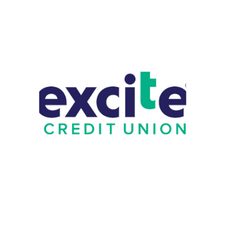In the competitive business landscape, achieving a high return on investment (ROI) is paramount. With saturated markets and dwindling consumer attention, creative marketing emerges as a key differentiator and catalyst for growth. This article explores the power of innovative campaigns in driving business success and enhancing ROI beyond the capabilities of traditional marketing strategies.
The Essence of Creative Marketing
Creative marketing transcends conventional advertising by blending art and science to craft campaigns that captivate, engage, and resonate with target audiences on a deeper level. Like all Challenger Brand Marketing® it’s about breaking free from the noise of traditional marketing methods through unique, memorable experiences that spark conversations and foster emotional connections. By leveraging originality in concept and execution, marketing can turn a brand into a consumer favorite, leading to increased loyalty and sales.
Amplifying Brand Recognition
One of the most immediate benefits of creative marketing is heightened brand recognition. In an environment where consumers are bombarded with countless messages daily, an innovative campaign can cut through the clutter and leave a lasting impression. Creative marketing not only captures attention but also encourages sharing, extending the campaign’s reach organically. This virality factor is a potent multiplier of marketing efforts, amplifying brand visibility and recognition exponentially.
Engaging and Retaining Customers
At its core, creative marketing prioritizes engagement, turning passive observers into active participants. Interactive campaigns, immersive experiences, and storytelling that strikes a chord can transform indifference into interest and interest into investment. By engaging consumers in this manner, businesses foster a deeper connection, making it more likely for customers to choose their brand over competitors. Furthermore, this engagement breeds loyalty, as customers feel a personal connection to the brand, leading to higher retention rates and lifetime value.
Driving Conversions and Sales
The ultimate measure of any marketing campaign’s success is its impact on the bottom line. Creative marketing, with its ability to engage and resonate on a personal level, directly influences purchasing decisions. Campaigns that evoke emotion or provide unique value can incentivize consumers to take the leap from consideration to purchase. Moreover, by differentiating a brand in the marketplace, creative marketing can command a premium, enhancing perceived value and driving higher sales.
Maximizing Marketing ROI
The return on investment from creative marketing extends beyond immediate sales or engagement metrics. Innovative campaigns can transform a brand’s image, catapulting it from obscurity to top-of-mind awareness. This brand elevation increases the effectiveness of future marketing efforts, as a strong brand foundation enhances consumer receptiveness to messages. Additionally, campaigns often generate valuable data and insights into consumer preferences and behaviors, informing more effective targeting and personalization strategies in the future.
Creative Marketing: A Strategy for Sustainable Growth
Implementing creative marketing requires a willingness to take risks, invest in new ideas, and sometimes, embrace the unconventional. However, the potential rewards far outweigh the risks. By fostering brand loyalty, enhancing recognition, and driving sales, creative marketing can significantly impact a company’s ROI. It’s not merely a tactic but a strategic approach to sustainable growth in a competitive business environment.
As businesses navigate the challenges of an ever-evolving market landscape, creative marketing stands out as a beacon of opportunity. By embracing innovation and prioritizing creativity, companies can unlock new growth avenues, deepen customer relationships, and achieve a competitive edge. The ROI of creativity is clear, making creative marketing not just an option but a necessity for brands aiming for success in today’s digital age.









